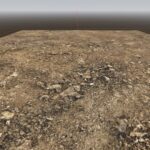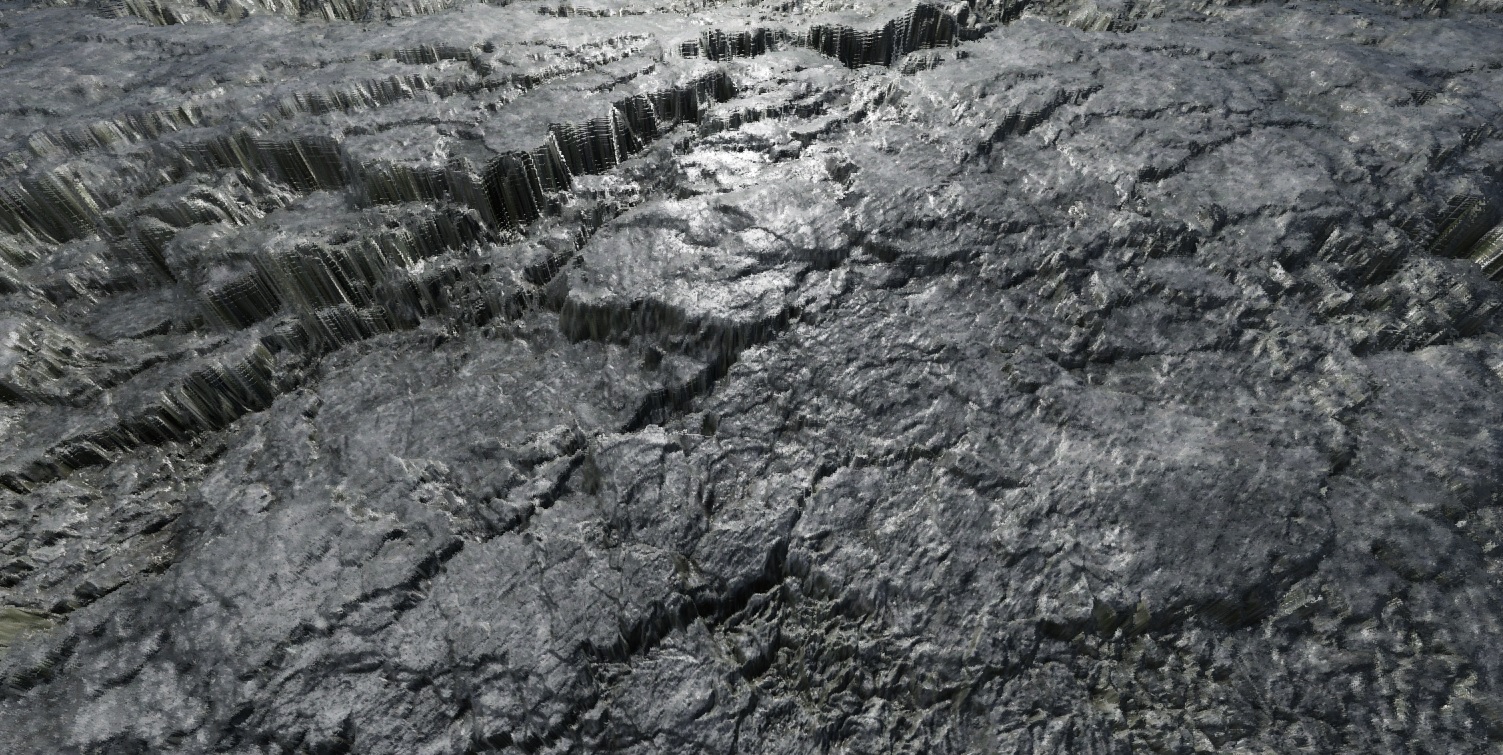Iterative parallax mapping
More lightweight than parallax occlussion mapping, better looking than basic parallax.
Shader code
shader_type spatial;
render_mode blend_mix,depth_draw_opaque,cull_back,diffuse_burley,specular_schlick_ggx;
uniform vec4 albedo : source_color;
uniform sampler2D texture_albedo : source_color,filter_linear_mipmap,repeat_enable;
uniform float point_size : hint_range(0,128);
uniform sampler2D texture_orm : hint_roughness_g,filter_linear_mipmap,repeat_enable;
uniform float ao_light_affect : hint_range(0.0, 1.0, 0.01);
uniform sampler2D texture_normal : hint_roughness_normal,filter_linear_mipmap,repeat_enable;
uniform float normal_scale : hint_range(-16,16);
uniform float heightmap_scale;
uniform int height_iters_max : hint_range(1, 30, 1) = 10;
uniform int height_iters_min : hint_range(1, 30, 1) = 4;
uniform vec2 heightmap_flip;
uniform vec3 uv1_scale;
uniform vec3 uv1_offset;
uniform vec3 uv2_scale;
uniform vec3 uv2_offset;
void vertex() {
UV=UV*uv1_scale.xy+uv1_offset.xy;
}
void fragment() {
vec2 base_uv = UV; //Parallax code starts here
{
vec3 view_dir = normalize(normalize(-VERTEX)*mat3(TANGENT*heightmap_flip.x,-BINORMAL*heightmap_flip.y,NORMAL));
float num_layers = mix(float(height_iters_max), float(height_iters_min), abs(dot(vec3(0.0, 0.0, 1.0), view_dir))/2. ); //Distance lod
num_layers = round(num_layers/3.)*3.; //Layers stepped every 3
for (float i = 0.; i < num_layers; i++){
float h = (texture(texture_orm, base_uv).a - 0.5); //Uses alpha channel of ORM texture
h *= heightmap_scale/num_layers;
h -= (1./(i+1.))*(1./num_layers);
h = clamp(h, -0.5, 0.5);
h -= 0.5/num_layers;
vec2 view = view_dir.xy;
view *= 0.01;
view *= h;
base_uv += view;
}
}
//Material stuff
vec4 albedo_tex = texture(texture_albedo,base_uv);
ALBEDO = albedo.rgb * albedo_tex.rgb;
vec4 orm_tex = texture(texture_orm,base_uv);
ROUGHNESS = orm_tex.g;
METALLIC = orm_tex.b;
NORMAL_MAP = texture(texture_normal,base_uv).rgb;
NORMAL_MAP_DEPTH = normal_scale;
AO = orm_tex.r;
AO_LIGHT_AFFECT = ao_light_affect;
}








amazing stuff man!
Hi!
This looks awesome, but for some reason the parallax effect is not working for me.
I have tried different “Heightmap scale” values and used this texture:
https://3dtextures.me/2021/04/22/rocks-hexagons-002/
Do you have a sample project that shows this shader in action?
It is precisely what I need and I can’t figure out why it is not working…
Any answer would be appreciated! 🙂
@moonlightart — there’s a pretty bad bug in the shader code (for Godot 3, but I expect it’s the same for Godot 4).
The original code above sets heightmap_flip to vec2(0.,0.) which zeroes the tangent and binormal.
That’s why there’s no parallax effect. You need to set it to 1.
uniform vec2 heightmap_flip = vec2(1.);
Then you’ll get the parallax effect.
To flip the heightmap in x or y, set that component to -1.0, never to zero!
@Rytelier, this is a very good lightweight, non-occlusion parallax shader. Nice job.